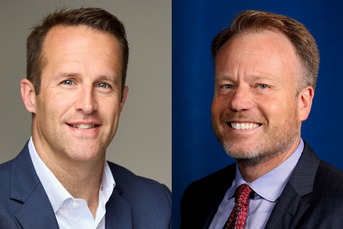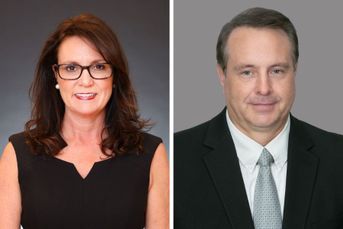Capital Group preps another wave of active ETFs

The four active ETFs the company is readying include international equity and emerging markets exposure.
Capital Group is expanding its footprint in the active ETFs business, and on Wednesday filed for its fourth wave of products.
The firm, which launched its first exchange-traded funds just under two years ago, currently has $21 billion across its line of 14 ETFs, which it notes makes it one of the fastest-growing firms in the category.
In filings this week with the Securities and Exchange Commission, Capital Group indicated plans for four additional ETFs: the Capital Group New Geography Equity, International Core Equity, Global Equity, and Conservative Equity ETFs.
“We continue to expand our suite of ETFs which are designed to sit at the core of a portfolio,” a company spokesperson said in an email. “The four new equity ETFs meet a need we’ve heard directly from advisors and the investors they serve. We filed for four new equity ETFs that will complement our existing suite and provide enhanced optionality for clients and expect to launch the new strategies this spring.”
Of the 14 ETFs Capital Group currently offers, seven are equity strategies, six are fixed income and one is multiasset.
For advisors who seek to build portfolios with the firm’s ETFs, the emerging markets category has been missing, said Todd Rosenbluth, head of research at VettaFi. The New Geography Equity ETF covers that but does not appear to be a typical emerging markets fund, he noted.
“They have a couple of internationally focused one, which have the majority of assets invested in developed markets companies,” he said. “Many advisors want an emerging markets sleeve of their portfolio for diversification purposes.”
The forthcoming New Geography Equity ETF appears to differ from strictly emerging markets strategies in that it will allow some assets to be invested in companies domiciled in countries that are not qualified as developing, but have business in emerging markets. At least 30% of assets will be invested in companies in developing countries, according to the initial prospectus.
That strategy could help address the liquidity constraints of the ETF structure while allowing the typically less-liquid emerging markets asset class to be included, Rosenbluth said.
Since Capital Group started launching ETFs in February 2022, the company has added products in waves – it brought a few more to market later in 2022 and then again last year, he noted.
“Even though the ETF industry is 30 years old … it’s really been in the last three years that actively managed ETFs have risen in popularity,” Rosenbluth said. That has been largely due to additions of products, some of which have had been so-called semitransparent ETFs, which don’t disclose exact portfolio holdings as often as fully transparent ETFs. The active ETFs from Capital Group fall into the latter category. Currently, regulatory approval for the semitransparent ETF structure only applies to U.S. equity holdings, Rosenbluth noted.
So far, demand for active ETFs has been high, with money rushing into the product category at the same time actively managed mutual funds have been hemorrhaging. The biggest mutual fund providers have been attentive to that need, having added ETFs even if they had been hesitant to do so in the past.
Among the biggest active ETF providers, Capital Group is different, in that the shop focuses on core portfolio holdings with traditional, long-term management, Rosenbluth said. The biggest active ETF provider, Dimensional Fund Advisors, has broad market exposure using small-cap valuation and quality as drivers, he noted. The biggest active ETF, the JPMorgan Equity Premium Income ETF, at nearly $32 billion, is a covered-call ETF.
“Capital Group has [used] much more of a fundamental approach, and when you look at their holdings, there are many that are widely held within benchmarks, but they’re also choosing to not hold stocks,” Rosenbluth said, comparing that to approaches associated more with active mutual funds.
And even with $21 billion in assets, the Capital Group ETFs represent a small slice of the company’s business, less than 1 percent of its total $2.5 trillion in assets under management. While the company’s flagship American Funds mutual funds have remained a draw for investors seeking active management in a ’40 Act structure, the ETFs that Capital Group has been rolling out are distinct products, Rosenbluth noted.
Among the 14 existing ETFs, there is some overlap in portfolio management with similar mutual fund strategies, but they “are not clones,” he said.
Investors need to know the differences between actively managed ETFs
Learn more about reprints and licensing for this article.








